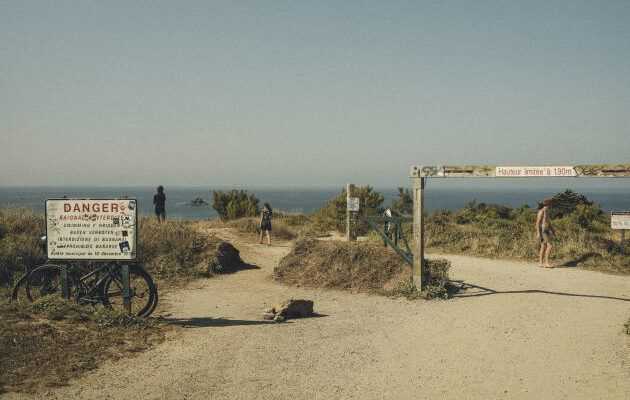Fragments of FranceLa Palue beach, the Mecca of Breton surfing, is a victim of its success, which wears out residents and nature. In Crozon, a town in Finistère, the town hall has decided to take action, even if it means causing some discontent.
The photomontage is entitled “Holiday memories in Crozon, summer 2021”. We do not see the slightest beach on the Breton peninsula, but a mosaic of dissuasive road signs – no entry, prohibited parking, dead end – Vauban barriers and wooden blocks which restrict the accesses. A handwritten annotation adorns this anonymous document: “When will it be? sanitary facilities to access the beaches? Mr Mayor, think about it a bit… ”
Patrick Berthelot keeps in a cardboard folder, among other letters received in recent months, this memory of the strange quarrel, Clochemerle and universal at the same time, which spiced up the summer in the town he has been running for the last few months. municipal. “You must not be sensitive to criticism, otherwise you won’t sleep anymore”, he sighs. Main subject of the dispute, at the center of this photomontage also broadcast on Facebook : a green steel barrier, at the entrance of a stony path that goes down to the Palue beach.
La Palue: 1,250 meters of fine sand at the foot of an immense bushy dune framed by two cliffs. A wild beauty to cry and dreamy waves, a paradise for surfers, hikers, bohemian campers. The only access to this end of the world is a road of 1 kilometer which crosses the hamlet of the same name, and walks narrowing between the pentys, small typical stone houses, so that, in the last hectometers, we do not pass two cars, not even one if you are a little wide. At the end of the hamlet is the “upper parking lot”, a wasteland where 80 vehicles are crowded. Before the installation of the famous barrier, this summer, we could still take the stony path leading to the “lower car park”, 40 spaces on the beach.
Incivility and scandalous parking
The Kerdreux own, on the left side of the road, the last house before the ocean. “We had electricity in December 1950, and in 1960, we still had to fetch water from the pump in the dune”, remember Anne-Marie, the mother, 92 years old. “And then there were the 1970s, the“ peace and love ”years, continues Jean-Yves, the son. The dunes were squatted by hundreds of tents, Germans walking around naked, “summer of love” atmosphere. It was great, we said to ourselves: “There are people who are interested in us!” ” Fifty years later, it’s less formidable: “Now there are too many people interested in us. “
The Germans are still there, they put on a wetsuit in the meantime, and were joined by Belgians, Dutch, Poles or Czechs in search of nice rollers. Massification of tourism, surf boom, spread of good deals on the Internet: La Palue is overcrowded today. Some days you could walk on water from one board to another.
You have 65.49% of this article to read. The rest is for subscribers only.
